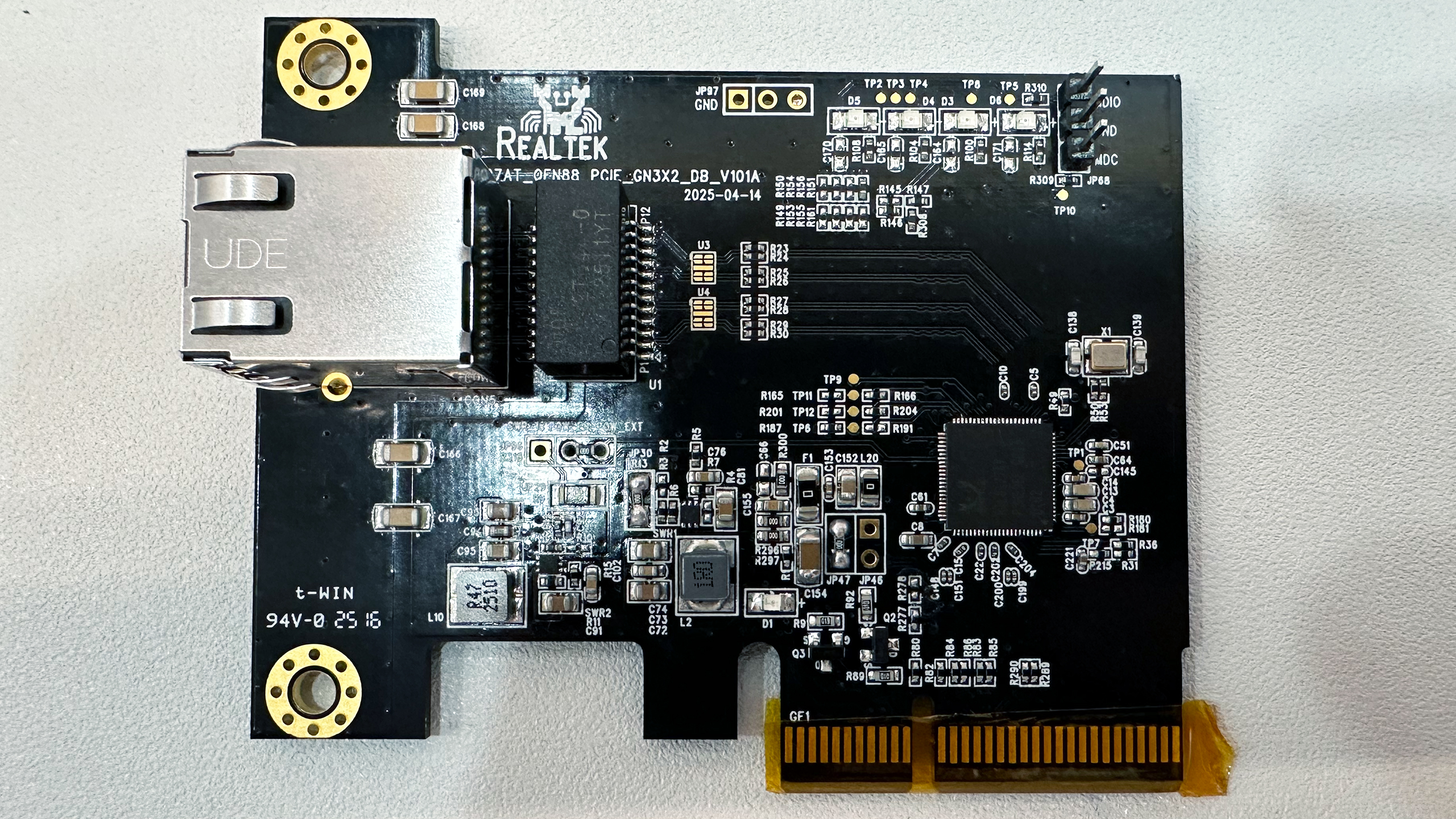- cross-posted to:
- [email protected]
- cross-posted to:
- [email protected]
Can we finally get some affordable 10GbE switches too?
At least it’s not Marvell. But, man, can we pay another 17c and get … I guess not Broadcom as they’re waxing seriously dinkish, but who else?
Intel is probably still the gold standard. I’d pay a few bucks more to have something much more reliable.
Intel is probably still the gold standard.
I guess you’re not familiar with the i225-v and its variants. Intel burned their reputation for good NICs with that fiasco.
I am just wondering if it would be better to go straight to fiber instead of ethernet as most have fiber to the home anyway. That should help with future speed upgrades beyond 10Gbit as well.
Fiber is also more power efficient? Why not?
You need more than10Gb/s at home? I mean we all know the 640Kb meme but I’m curious here :-)
I frequently transfer data over the LAN at a higher rate than my internet connection.
Kinda wish it was easier to test the connection speed between devices tbh, unless someone knows a good way of doing it but many devices are so locked down I am not sure how you would.
Even when doing that, the bottleneck is the storage write speed. you can have 1Tb internet connection and it wouldn’t matter unless you have enough users in a home.
Not all data transfer is sending stuff to storage, streaming your display live at a high bitrate for example never needs to go into storage.
Is more than 1Gbps needed for that? That seems insane, but I’m old and watch stuff in full HD so what do I know.
Low latency means low compression. Low compression means high bandwidth.
1080p60 NDI will be 200mbps. If you are doing 2160p60, that’s 800mbps (which is about the limit I would run 1gbe at). Doesn’t leave much overhead for anything else, and a burst of other traffic might cause packet drops or packet rejection due to exceeding the TTL.2.5gbps would be enough.
But I see 2.5gbps and 5gbps as “stop-gaps”. Data centers standardised on 10/40gbps for a while (before 25/100 and 100/400) - it’s still really common tbh - so the 10gbps tech is cheap.
I don’t see the point in investing in 2.5/5gbpsThanks for the info, didn’t think the limit was so close.
My box has 2.5Gbps but I’m with you on that one regardless of my real needs, I’ll wait it out til 10Gbps. If even my geek needs flare up I mean :-)
Serious question: What do you use a 10GbE adapter for? Are there ISPs which offer 10gigabit bandwidth? I suppose it would be useful on a LAN
edit:

Bro, tell that my German table first.
About damn time. We got a boost every few years from 10 to 100 to 1000. Then we just… Stopped. Stagnated. It’s understandable why, for a good long time one gigabit was all anybody needed, 100 MByte/sec is pretty good even for a NAS.
Of course then fiber ISPs got in the game, now in a lot of places you can buy 7-8gbps as a consumer product. And even multi-gig, which was supposed to ‘fix’ this, really ended up being insufficient. You could make a salad argument that multi gig was a waste of time and we should have just started moving to 10 gig.
Unfortunately, 10 gig switches still carry a significant premium. But this will start to shake that up. Sooner the better.
100MB/s are frustrating for a NAS. SSDs have been common for a decade, and the old spinning rust storage in my NAS is still faster than the network can handle?
Even HDDs can max a 100mbit connection. UHD Blurray is something like 80-150mbit/a.
100 MByte/sec. 8 bits per byte, call it 10 when you include overhead / CRC / etc.
1000 mbit = 100 mbyteSure. My point was that even for 100mbit/s, even UHD could probably still be streamed.
HDDs can probably max a 1gbit/s connection as well (often get 150MB/s sequential), which is more than sufficient for multiple IHD streams. Moving to 10gbit/s really isn’t needed for anything, and SSDs aren’t needed either to max a gbit/s network, unless doing random reads (i.e. lots of small files).
All true. But what if you aren’t just storing media for consumption? What if you’re doing photo editing, video editing, etc? If your NAS is either flash-based or has a flash cache, that extra speed can be really useful.
Are you saying you’d be loading all that data strictly over the network instead of having a local copy that gets synced periodically? That would be terrible on a 100 mbit/s line… If that was my workflow, I’d run 10 gbit/s cable everywhere and make sure clients had at least 2.5G.
I use my NAS for local backups and streaming when we watch something as a family. 100 mbit/s would be fine for that use case.
Yes I am, and that is exactly the point. I do not want spinning disks in my desktop, or anyone’s desktop or laptop. Give the actual computer a fast SSD for the OS and programs, then store the big data on a NAS or server. How’s the computer access it from that server in real time.
At 100 megabits (10 megabytes per second) that isn’t very fun. Gigabit ethernet is 100 megabytes per second give or take. That is where it starts to become useful for storage, as most spinning disks themselves have a transfer rate between 100 and 150 megabytes per second.But as you just pointed out, that can become a bottleneck. Especially if you have multiple people accessing the server. How much of a problem it becomes depends on what they’re doing. IE, 10 people editing photos can happily share a gigabit link to the server because they load the photo once and then the link sits idle while they work as the photo is cached in RAM, 10 people editing uncompressed high definition video will probably want a constant full gigabit to each of them because they’ll be using almost all of it constantly so you need a gigabit to each desk and 10 gig to the server (and a storage array with sufficient bandwidth)
but home Internet is still stuck at Gigabit speeds… and only in some cases are they maybe letting you go to 2 Gb. Wasn’t there that post floating around lemmy a while ago about how China can potentially give everyone like 5Gb for home or something? Can’t find it now but swore it was here…
I think 10GbE is more intended for local applications than for internet. Say, you have a NAS with a RAID array of nvme drives for video editing purposes that you want to access from a few workstations.
Even the other day I was quite happy to have 2.5GbE when I installed my new gaming PC, and steam was able to pull all my games directly from my old computer rather than downloading them over the internet again.
Anyway, LAN speeds have always been an order of magnitude higher than common internet speeds, so I don’t see the issue.





